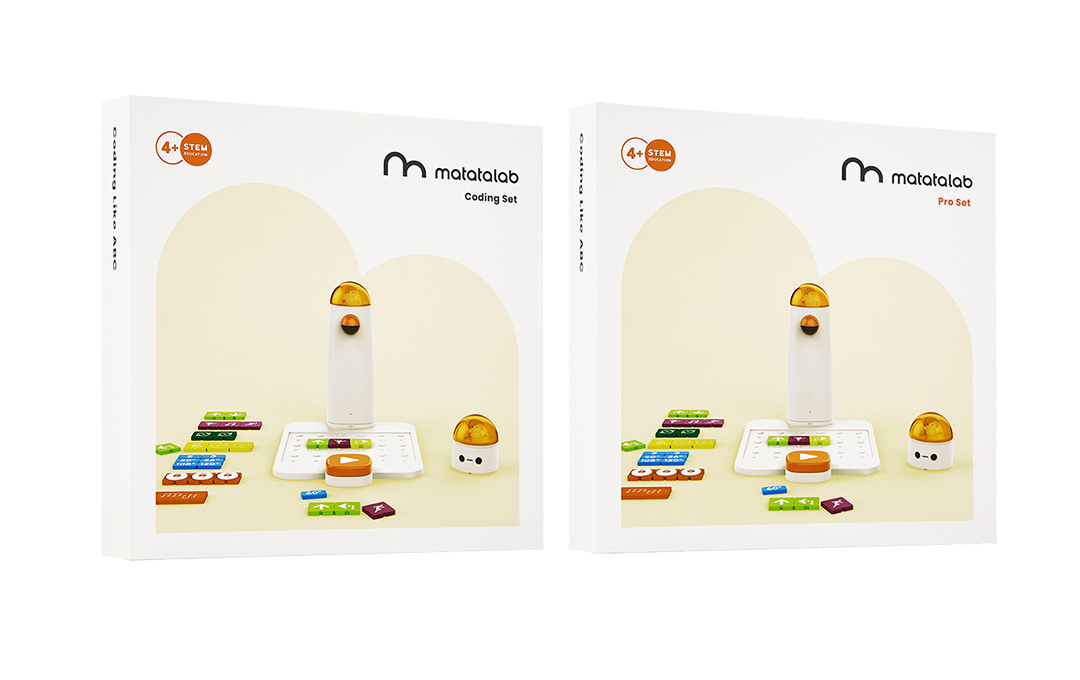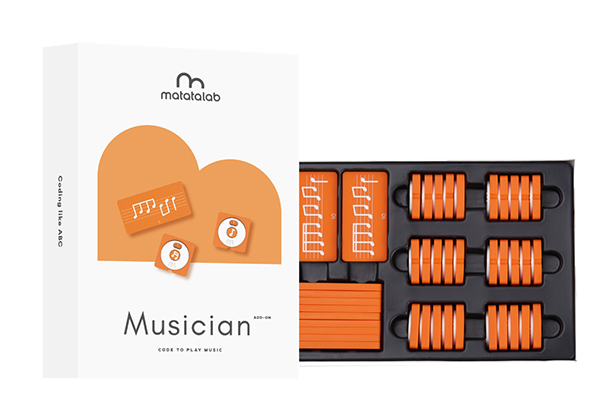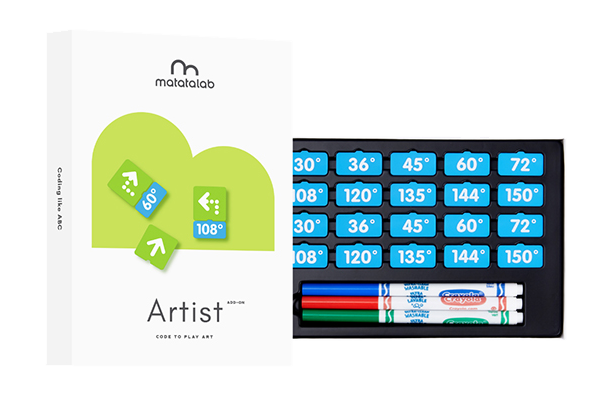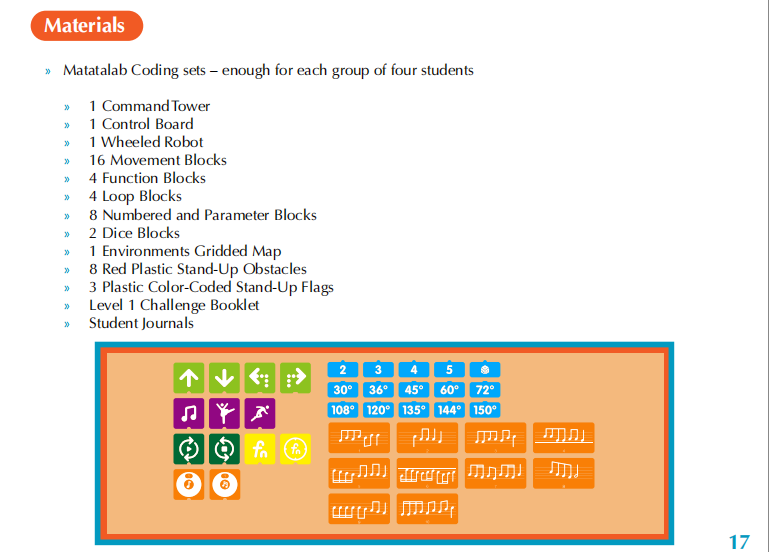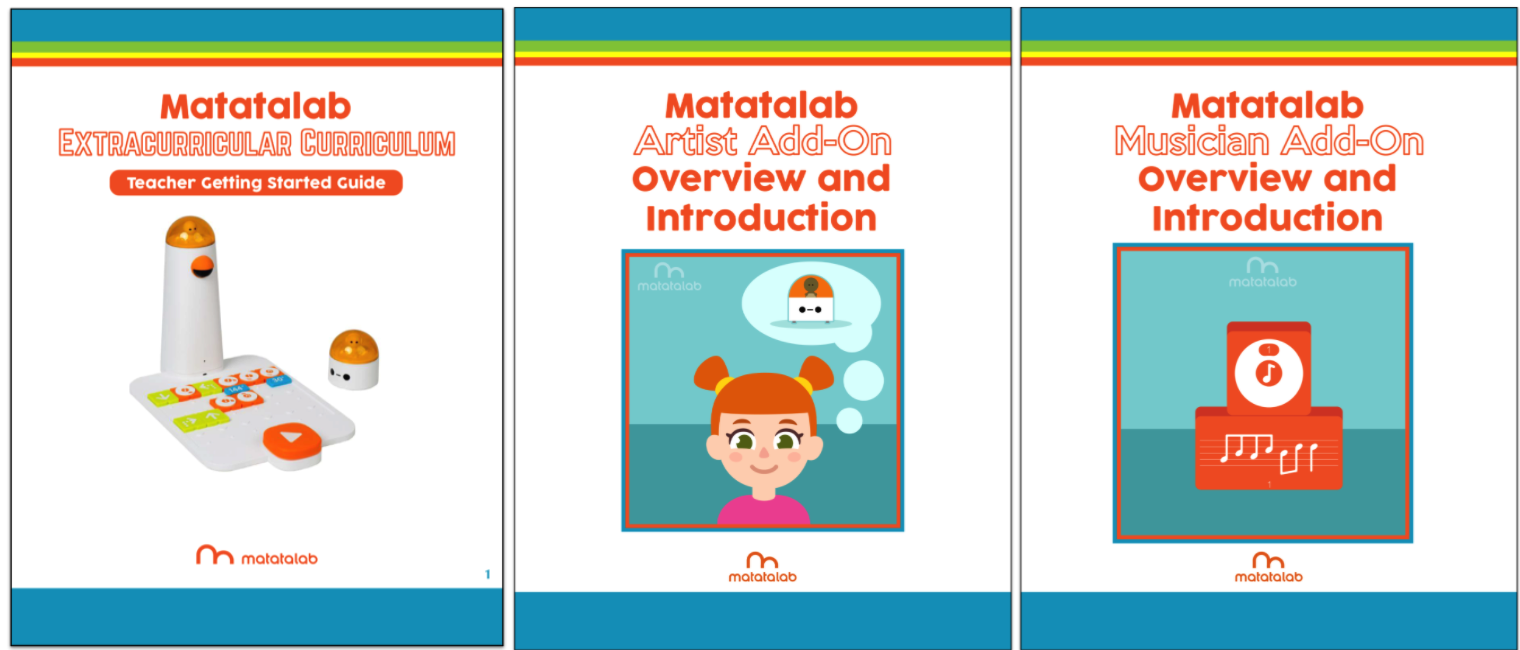
1. Lesson Objectives: Know what is included in this curriculum, understand how to apply this curriculum in the classroom.
2. Time: 25 mins
3. Language: English
4. Format: Completely Online
5. Level: Intermediate
Unit List:
1. Introduction
2. Preparation
3. User Guide
4. Teaching Advice
Unit 1. Introduction
The Extracurricular has 2 main parts: Teacher Guide and 12 lessons. Teacher Guide can help them understand how to use Matatalab Coding/Pro Set, how to apply it in their classrooms, and the aligned standards. Teachers can use these 12 lessons to help students learn how to use Matatalab Coding/ Pro Set and develop their computational thinking and 21st-century skills.
Artist Add-On and Musician Add-On Set Curriculum are divided into 2 main parts: Overview and Introduction and 12 lessons. The Overview and Introduction help teachers understand how to use Artist Add-On and Musician Add-On with Matatalab Coding Set, how to apply them in classrooms, and the aligned standards. The 12 lessons help teachers achieve cross-curricular teaching by using Matatalab and thus developing students' computational thinking and 21st-century skills.
In this lesson, teachers will learn how to make preparation if they wish to use these curriculums in their classrooms; how to use these curriculums when teaching, and some teaching advice.
Unit 2: Preparation
2.1 Content
Read Teacher Guide and Overview and Introduction to familiarize yourself with the content of a lesson.
2.2 Product
For this curriculum, you can use Matatalab Coding Set / Matatalab Pro Set, Artist Add-On Set, Musician Add-On Set (please make sure that the product is updated to the latest version and is fully charged)
2.3 Materials
Read the "Materials" section to understand the consumable materials to be used in a lesson and prepare them accordingly. Please also refer to the "Teacher Materials" section at the end of each lesson to download, print and create materials in advance if necessary.
2.4 Classroom
It is important to ensure that the table or floor is clean and level, regardless of the method of instruction used. The map should be leveled to ensure the unobstructed movement of the robot.
Unit 3. User Guide
3.1 Lesson Orientation
3.2 Lesson Content
3.3 Teacher Materials
3.4 Appendices: Curriculum Framework
Each lesson in these three curriculums is set to be 60 minutes in length and has the same structure.
3.1 Lesson Orientation
Overview: This section provides an introduction to the general content and implications of a lesson. If necessary, please read these sections in advance to understand the general logic of the book.
Essential Objectives: This section presents the basic objectives of each course chapter around which all lessons within that chapter are built. Teachers should be careful not to deviate from the objectives when teaching.
Learning Objectives: This section sets out the learning objectives that students should be able to achieve or demonstrate at the end of the course. Teachers can accordingly turn these specific requirements into classroom tasks.
Standards: This section captures the course standards to which the chapter refers and the specific entries that correspond to them.
Time: Indicates the duration of reference for the implementation of the course.
Materials: This section describes all the equipment and materials needed to implement the chapter‘s curriculum. It is worth noting that the prescribed materials are usually shared by four students. In line with the "Cooperative Learning, Exploratory Learning" concept, our course activities are usually designed to be conducted in groups of four. However, you can make adjustments to suit your needs when actually conducting the course.
Teacher Set-Up &Preparation: This section suggests teacher preparation activities for each class. Underneath the basic recommendations, there are correspondingly marked paragraphs describing the preparation activities that teachers need to do in a particular chapter.
Student Management: Recommendations for class management based on the content of the chapter.
Vocabulary: New vocabulary that will appear in the chapter, and explanations of the vocabulary.
3.2 Lesson Content:
Lessons: Each curriculum has 12 lessons, and the lesson content is advanced in accordance with the logical difficulty of introduction, understanding, and application.
Lesson Structure: A consistent curriculum structure ensures a progressive increase in knowledge and application difficulty. Take the first lesson of Extracurricular Curriculum as an example:
- Introduction: In the first lesson, the teacher will organize students to discover the thrust of the lesson through observation, discussion, etc., and introduce them to MatataBot, Command Tower, and their functions.
- Matatalab Activity: Following the introduction, students will engage in exploratory activities to further explore, apply, and consolidate what they have just learned. Specifically, based on the knowledge and how-to's learned in Lesson 1, students will work in groups on the Challenge Booklet 1’s task using MatataBot.
- Closing: The teacher wraps up the lesson and raises questions to elicit reflection from students and bolster the knowledge gained. In this curriculum, students are encouraged to further reinforce their learning at that stage by presenting what they have learned in today's lesson through drawing and collaboration.
- Extensions: Suggestions for extension tasks for uplifting abilities.
- Real-World Connections: Targeting knowledge extension and transfer, this section is designed to help students connect what they have learned to the real world.
3.3 Teacher Materials:
The paper materials students will use are attached to this final section. Teachers can download and print out or cut out some of them, such as flashcards, worksheets, before teaching.
3.4 Appendices: Curriculum Framework:
Please use the link below to download the Matatalab Extracurricular Curriculum Framework:
Matatalab Extracurricular Curriculum(Click to download)
Please use the link below to download the Matatalab Artist Add-On Curriculum Framework:
Matatalab Artist Add-On Curriculum(Click to download)
Please use the link below to download the Matatalab Musician Add-On Curriculum Framework:
Matatalab Musician Add-On Curriculum Framework:(Click to download)
Unit 4. Teaching Advice
4.1 Cooperative Learning:
The most common form of cooperative learning in a Matatalab classroom involves four students working as a group to operate a set of MatataBot. On this basis, the teacher could assign roles to the group members to ensure their engagement. The roles we propose are usually Programmer and Inspector, with the Programmer carrying out the programming and the latter assisting and monitoring the former. A group of 4 is a relatively ideal set-up, which ensures that students can work in pairs and engage in peer learning. There is, of course, flexibility for the teacher to ration based on factors such as the number of students.
4.2 Exploratory Learning:
A Matatalab lesson will usually set aside a sufficient amount of time for students to explore. When students don't feel like they have a clue, teachers can use examples to stimulate children's imaginations and demonstrate possibilities. Teachers can also spark students' thinking by asking questions as they go through the process.
Copyright © 2023 MATATALAB CO., LTD. All Rights Reserved


